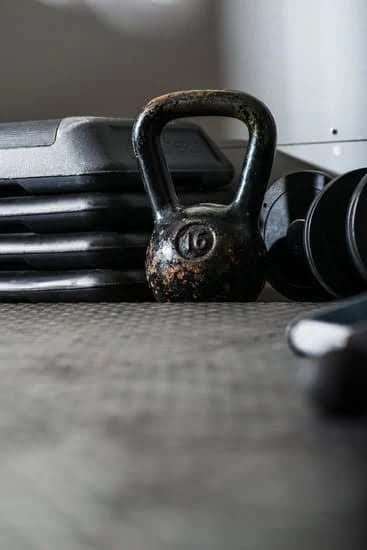Introduction
When it comes to personal training in one’s own home, there are many different laws and regulations that must be followed. Personal trainers must be aware of any applicable local, state, and federal regulations when providing services to clients in their homes. This includes licensing requirements, insurance policies, health and safety standards, labor/employment laws, contract rules and legal liabilities. Most importantly, you should always err on the side of caution and make sure that you get qualified professional legal advice should a dispute or disagreement arise between parties involving personal training services within the home.
Licensing Requirements: It is important for trainers to meet all licensing requirements that may apply depending on their location. The process of becoming a licensed personal trainer can vary by jurisdiction; therefore it is essential to research the specific rules surrounding licensing in your particular area before beginning to work with clients in their homes.
Insurance Policies: Having a valid insurance policy is necessary for any type of business venture or service provision including private training at home. There are two types of insurance policies: liability and property damage coverage. Liability coverage will help protect against potential claims arising out of providing personal training services while property damage coverage helps protect against accidents that could lead to damages or destruction of client’s personal possessions.
Health & Safety Standards: When providing private training at home it is important to ensure that both the trainer and client have adequate knowledge concerning health & safety procedures prior to engaging in workout activities. Things like checking flooring surfaces for stability before exercising, keeping objects clear from designated workout areas for safety reasons, being aware of noise levels so as not to disrupt neighbors are all important things that need to be taken into consideration in order to provide a safe environment for workout sessions.
Labor/Employment Laws: Depending on the nature of contractual arrangements between trainer and client (paid sessions vs unpaid sessions), trainers may need to meet certain labor/employment laws or they may end up opening themselves up too much risk legally if they do not adhere to applicable employment guidelines set forth by the region they are practicing in.
Contract Rules & Legal Liabilities: Every legal agreement made between two parties should involve agreed upon fee structures & services covered under said agreement – this is usually achieved through entering into a formal contract which outlines specifics pertaining payments & obligations incurred under the terms of said contract –this includes expectations for completion dates, refunds et cetera. By understanding these specifics ahead of time one can avoid potential legal liabilities from occurring down the line due possible misinterpretations or lack of specified terms & conditions attached with an agreement initially between two parties .
Benefits of Personal Training in the Home
When it comes to fitness, personal training in a home environment can be extremely beneficial for individuals who want to maximize their workout results. Personal training in the home provides a quiet and comfortable atmosphere where one can focus on their strength, flexibility, and endurance goals without getting distracted by other exercisers or equipment. This type of personal training also allows clients to enjoy privacy while working out with a qualified trainer, which may make it easier to concentrate and achieve better results in less time.
In terms of legal regulations, most states and territories require personal trainers to hold certification from a nationally accredited organization. Additionally, many states require that all personal trainers maintain valid liability insurance to provide protection against claims of negligence resulting from an injury sustained by their client. A registered business is generally needed listed as the employer of any trainers performing in-home activities or teaching any lessons as part of their practice. As for tax issues, some jurisdictions require contractors such as personal trainers operating within local state boundaries to collect appropriate taxes on service fees rendered in accordance with the laws and regulations of that jurisdiction. It’s important for both parties—the trainer and the client—to check local regulations when setting up a personal training contract at the client’s home. Finally, depending on where you live, additional permits or licenses may be necessary before scheduling in-home sessions with clients.
What to Look for in a Home Personal Trainer
When hiring a home personal trainer, there are certain laws and regulations to consider. Depending on the country or state you live in, different laws may govern how a personal trainer can legally practice in a home setting. It is important to research any current local regulations in your area, as well as those of the gym or fitness center if you are working with a certified professional there.
In addition to researching local laws, it is also important to carefully evaluate the qualifications and experience of any potential personal trainers. This includes looking at qualifications, such as certifications as especially experience in working with clients with specific needs or goals. Ask for references and check them out before making any kind of commitment to ensure that you are getting quality care from your chosen professional.
Finally, ask yourself what type of training environment best suits you – whether that be one-on-one sessions or group classes. Different trainers specialize in different types of settings and approaches, so make sure to find out what works best for you and your goals before signing up with anyone. Also take into account factors such as cost, availability and location when considering personalized options such as home personal training.
Regulations for Personal Training in the Home
In order to provide personal training in a residential setting, there are certain laws and regulations that must be followed. It is important to research the state and local laws that apply before providing any services. Generally, most states require personal trainers who work in the home to register with their respective state department of labor or health licensing board. Furthermore, if working for an employer, such as a gym or fitness center, trainers may need to provide proof of insurance and adhere to all applicable guidelines set forth by the organization. Additionally, trainers should always follow exercise safety guidelines when providing care for clients in a home setting. This includes proper supervision during activities as well as using appropriate equipment and spaces for exercising in the home. Lastly, check in regularly with clients regarding progress and motivate them to keep up with their goals and stick with their regimen when needed.
Licensure and Certification Requirements for Home Personal Training
Home personal trainers are typically required to meet the same licensure and certification requirements as those who work in a gym or health club. Depending on the state, this might involve obtaining an individual license or certificate authorizing one to practice personal training in the home. In addition, some states might require that all such trainers have liability insurance coverage to protect both themselves and their clients from any potential legal trouble stemming from services provided in the home.
In addition to licensure and certification requirements, there may be additional state laws governing home personal trainer operations. For example, there may be restrictions relating to advertising and solicitation of clients in certain areas, as well as zoning regulations regarding where the business can take place within certain residential neighbourhoods. Some local governments may also impose noise restrictions that prevent unsupervised exercising equipment from being used too close to other buildings or streets, which can affect how sessions are conducted outdoors. Finally, if personal trainers will be meeting with multiple clients at once in a given location, they should make sure they do not violate any state laws regarding group sizes and capacity limits.
Insurance Requirements for Home Personal Training
When providing personal training services in a home, it is important to carry adequate insurance coverage for liability. General liability coverage can protect both you and your client from the risk of an accident or injury resulting from the training session. Make sure that your policy covers third party claims arising from bodily injury, medical payments, damage to property, and other potential liabilities arising out of your personal training services.
In addition to general liability insurance, you might also need professional liability insurance – often referred to as errors and omissions insurance (E&O). This type of coverage will help safeguard you against potential claims made by dissatisfied clients or lawsuits due to a perceived lack of quality service. You should also ensure that you have an umbrella policy covering excess damages in the event of a catastrophic incident.
Finally, take time to research any applicable regulations or laws related to setting up a home-based personal training business. For example, some jurisdictions may require that business owners obtain licenses and follow other rules related to businesses located within their jurisdiction. Knowing local laws beforehand can help make sure that everything is legal when providing personal training services in a home environment.
Different Types of Home Personal Training and Their Laws
1. Coaching in a Client’s Home: Many states allow for personal trainers to enter a client’s home and provide instruction on various physical activities, like exercises and nutrition plans. Regulations governing this type of training vary from state to state but generally require the trainer to be certified or licensed, possess adequate liability insurance and follow state laws on health and safety.
2. Group Training Sessions in a Client’s Home: A handful of states grant permission for group training sessions within the home, allowing multiple clients to attend classes or seminars taught by personal trainers inside their residence. The same requirements of certification, licensing and insurance apply as with individual session as well as some additional laws such as maximum occupancy limitations or safety considerations specific to each venue.
3. Online Personal Training Services: While not technically taking place in the client’s home, states may regulate online personal training services due to remote access concerns regarding the transmission of sensitive material across the internet connection by both parties involved in providing and receiving personalized fitness instruction. Additionally, states may also require additional consumer protection measures such as requiring background checks for trainers who provide online instruction.
4. Commercial Yoga Studios: In contrast with individual coaching sessions at a client’s house, most jurisdictions allow commercial yoga studios where multiple instructors can operate from what is typically considered one location if certain zoning regulations are met — involving things like noise level limits or square footage restrictions — depending on local ordinances.
Training Laws For Different Regions
The laws for personal training in a home vary depending on the region or jurisdiction. Generally, most states require that the personal trainer possess some kind of certification to demonstrate their competence in the field. This could be anything from an undergraduate degree in exercise science or kinesiology to a nationally recognized certificate from a reputable organization such as the American Council on Exercise (ACE). Additionally, personal trainers must have knowledge in general areas such as cardiopulmonary resuscitation (CPR) and first aid, as well as any other specific skills related to the use of exercise equipment and proper technique during training sessions.
In some regions, it may be necessary for the personal trainer to obtain licensure from the local government. Depending on the state or county, licensure can be best achieved by demonstrating proficiency through an exam, completing continuing education courses throughout their career, or having a background check completed prior to being issued a license. Moreover, most jurisdictions also require that personal trainers provide proof of liability insurance coverage to protect them and their clients against any potential injury that could occur while training in someone’s home. Finally, many areas have adopted certain standards set by professional organizations such as NCCA-accredited certification agencies to ensure the quality of services provided by personal trainers.
Common Pitfalls for Home Personal Trainers to Avoid
First and foremost, home personal trainers must be aware of the licensing requirements in their state, as the legal requirements for licensure vary from location to location. Generally, trainers must register with their local area and/or state licensing authority before beginning to train clients in homes. Additionally, personal trainers need to be aware of insurance policies- as many states will require business insurance for home training sessions.
Home Personal Trainers should are also aware that professional instruction and assessments may still need to be done in a gym or fitness club setting due to the difficulty of correctly assessing and observing form when working with clients at home. It is highly important for trainers to ensure all equipment used during sessions is safe and has been properly inspected beforehand.
Finally, while it is important to give clear instruction on exercises and address any issues during the session, home personal trainers must also provide detailed client contracts, paperwork such as health forms or release waiver documents which set out details like payment terms, cancellation policy etc., health liability insurance documents and basic emergency/first aid procedures must all be established up front at the time of booking.
Additional Considerations and Safety Tips for Home Personal Trainers
· Have the necessary business licenses and insurance coverage to protect you and your client in case of an emergency or injury.
· Make sure that the space you are working in is up to professional standards with functional and durable equipment.
· Establish clear and consistent safety protocols for clients when exercising indoors or outdoors, including social distancing if necessary.
· Educate yourself on proper nutrition and dietary guidelines to ensure you are giving your clients the best possible advice.
· Regularly inspect all safety materials, such as mats and straps, and replace them when needed.
· If working outside, be aware of any potential dangers that can arise due to environmental factors (i.e., heat/cold weather conditions).
· Have an emergency plan in place for medical issues that may arise due to a client’s physical fitness regimen.
· Develop an effective and tailored exercise program for each client’s fitness goals, strength level, age, experience level and any health conditions or disorders he/she has.
· Incorporate progress monitoring methods into the program in order for you to track progress and make adjustments whenever necessary.
· Consult with a physician if there are any questions about a client’s health status before beginning a training session or program.
Conclusion
Home personal training is an increasingly popular option for those looking to take their fitness to the next level. Working one-on-one with a certified trainer can provide customized and more comprehensive exercises than what is available in most gyms. For those who don’t have easy access to a gym, or prefer the comfort of their own home, working out at home can be an effective, safe, and convenient way to stay fit.
The laws governing personal training in a home setting vary from state-to-state, but generally require that trainers possess proper certification for protection and liability purposes. With this requirement in place, individuals are sure to receive high quality services that protect both the trainer and client from potential legal problems or injuries during exercise sessions. It’s also important for individuals to research potential trainers thoroughly by reading reviews or asking for references before getting started.
Finally, exploring home personal training can be highly beneficial as it provides an opportunity to gain a personalized experience while avoiding (or lessening) the cost associated with gym memberships and pricey equipment like treadmills or ellipticals. Other incentives such as motivation, convenience and goals-oriented programming have turned home personal training into an attractive alternative amongst those looking for personalized health care strategies outside of the confines of a gym environment.

Passionate about providing useful information to anyone with an interest in the field of Personal Training, I strive to pass on to our readers quality information and to answer any questions about Personal Trainers, the work they do and how to become one.





